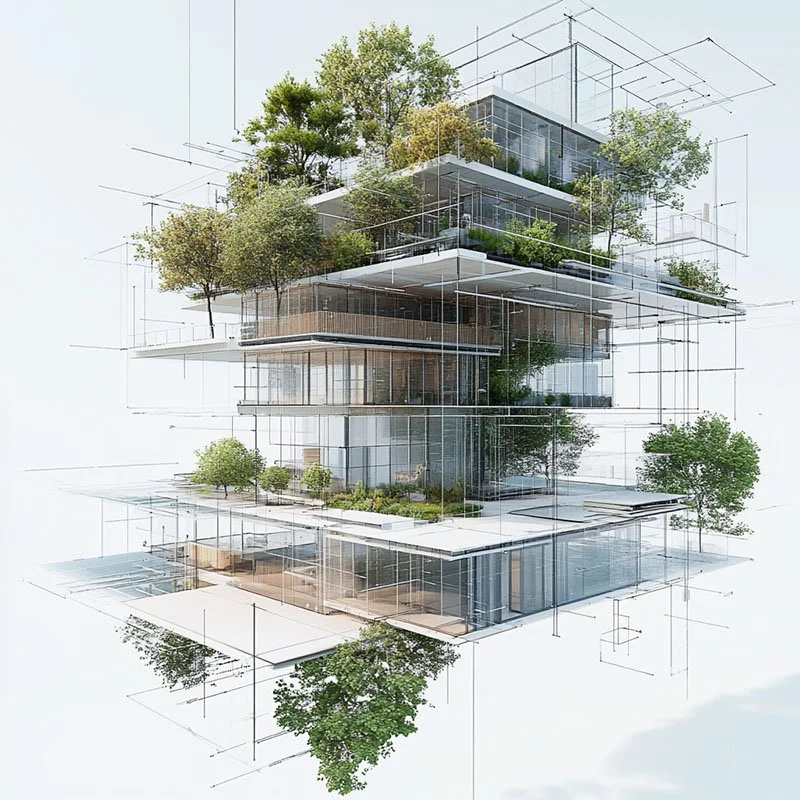The Future of AI in Architecture: Trends, Applications, and Challenges.
Artificial intelligence (AI) is slowly finding its way into different areas of life, including architecture. Recent studies show that while the use of AI tools is still quite limited among architectural professionals, more and more of them are willing to try it.
Today's Trends in the Adoption of the Model
AI in architecture is still in its early stages, and only a few professionals use AI-powered tools on a regular basis. Still, interest and experimentation are growing, especially among larger firms and younger architects who are more likely to try new technologies. Some practices are in the process of implementing AI into their workflows, recognizing its potential to increase productivity and innovation.
Applications of AI in Architecture
The main field where architects employ AI is at the design stage, where they apply tools that can create conceptual images, generate floor plans, and prepare drawings. AI is used to perform menial tasks, explore design possibilities, and even conduct analyses and simulations. While AI is useful in these initial drawings, inaccuracies and a lack of customization arise as projects progress to subsequent stages.
Demographic Trends in the Usage of AI
Younger architects, especially those under 50 years old, are more likely to embrace AI design tools. Image-generation software and chatbots are the most popular types of AI applications. It is anticipated that as organizations become more familiar with the benefits of AI, its use will extend to all age groups.
Benefits and Concerns
AI presents several benefits to the architecture industry, including:
Efficiency: By automating certain processes, architects can devote more time to design issues.
Enhanced Creativity: AI can generate numerous design concepts and provide inspiration.
Optimized Processes: AI-based simulations and analytics can enhance building performance through optimization.
However, professionals have the following concerns:
Accuracy and Reliability: How can AI outputs be ensured to be accurate and consistent with industry standards?
Future Outlook
Although the use of AI in architecture is still relatively low, it is increasing gradually. Most architects consider AI a tool that can improve design production rather than replace it. As technology continues to evolve, AI-based solutions are expected to become more precise, sophisticated, and tailored to specific needs. The industry is moving toward an integrated approach, using AI in conjunction with conventional design methods while also addressing ethical and technical issues.
Therefore, it is clear that AI is set to transform architectural processes, opening up new possibilities for efficiency and creativity. The use of AI in the field is expected to rise as architects discover more ways to integrate it into their practice and design production.
AI in architecture

